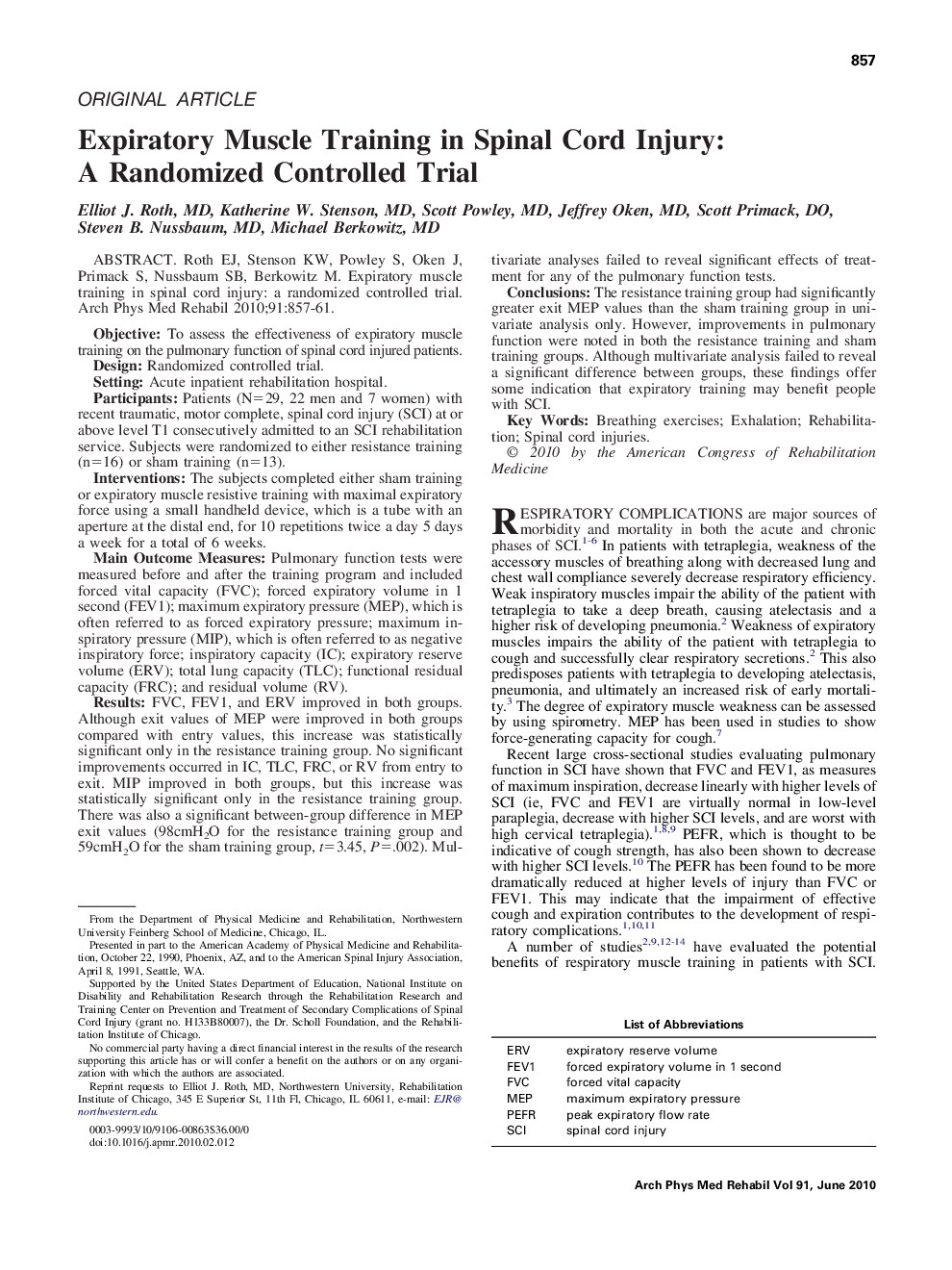| کد مقاله | کد نشریه | سال انتشار | مقاله انگلیسی | نسخه تمام متن |
|---|---|---|---|---|
| 3451144 | 1595752 | 2010 | 5 صفحه PDF | دانلود رایگان |

Roth EJ, Stenson KW, Powley S, Oken J, Primack S, Nussbaum SB, Berkowitz M. Expiratory muscle training in spinal cord injury: a randomized controlled trial.ObjectiveTo assess the effectiveness of expiratory muscle training on the pulmonary function of spinal cord injured patients.DesignRandomized controlled trial.SettingAcute inpatient rehabilitation hospital.ParticipantsPatients (N=29, 22 men and 7 women) with recent traumatic, motor complete, spinal cord injury (SCI) at or above level T1 consecutively admitted to an SCI rehabilitation service. Subjects were randomized to either resistance training (n=16) or sham training (n=13).InterventionsThe subjects completed either sham training or expiratory muscle resistive training with maximal expiratory force using a small handheld device, which is a tube with an aperture at the distal end, for 10 repetitions twice a day 5 days a week for a total of 6 weeks.Main Outcome MeasuresPulmonary function tests were measured before and after the training program and included forced vital capacity (FVC); forced expiratory volume in 1 second (FEV1); maximum expiratory pressure (MEP), which is often referred to as forced expiratory pressure; maximum inspiratory pressure (MIP), which is often referred to as negative inspiratory force; inspiratory capacity (IC); expiratory reserve volume (ERV); total lung capacity (TLC); functional residual capacity (FRC); and residual volume (RV).ResultsFVC, FEV1, and ERV improved in both groups. Although exit values of MEP were improved in both groups compared with entry values, this increase was statistically significant only in the resistance training group. No significant improvements occurred in IC, TLC, FRC, or RV from entry to exit. MIP improved in both groups, but this increase was statistically significant only in the resistance training group. There was also a significant between-group difference in MEP exit values (98cmH2O for the resistance training group and 59cmH2O for the sham training group, t=3.45, P=.002). Multivariate analyses failed to reveal significant effects of treatment for any of the pulmonary function tests.ConclusionsThe resistance training group had significantly greater exit MEP values than the sham training group in univariate analysis only. However, improvements in pulmonary function were noted in both the resistance training and sham training groups. Although multivariate analysis failed to reveal a significant difference between groups, these findings offer some indication that expiratory training may benefit people with SCI.
Journal: Archives of Physical Medicine and Rehabilitation - Volume 91, Issue 6, June 2010, Pages 857–861